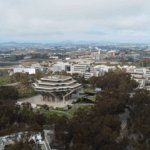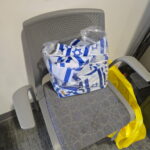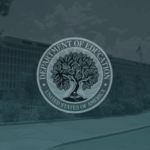Requiem for China
Those familiar with the atrocities committed by the Chinese Communist Party are often distressed by the soft treatment given communist leader Mao Tse-Tung, a leader personally responsible for the death of tens of millions.
At a recent press conference held by America’s Survival, Inc., Professor Paul Kengor explained why Chinese courses and history books tend to adopt rosy-eyed glasses when recording the actions of Chairman Mao.
“[Mao] was a cultural icon in America in the ’60s. At one point in the ’60s, The Thoughts of Chairman Mao was the number one selling book of the world,” said the Grove City College professor.
According to Kengor, Mark Rudd’s autobiography describes how he and other Weather Underground members derived inspiration from Mao Tse-Tung, Che Guevara or Fidel Castro, while one member—Michael Klonsky—was a Stalinist. Kengor said many of the WU members, like Ayers and Klonsky, went into education.
He also argued that academics can’t handle criticism of Bill Ayers because of a) his connection to Barack Obama and b) their anti-anti-communism. “It’s not that professors today, or most professors, are communist—and this is my olive branch here to the left and my caveat to the right to cool down their rhetoric,” he said, continuing
“The anti-anti-communists in academia in particular are writing the high school history books that your kids are using. Those are written by college professors,” he later said.
In 2002 Kengor reviewed 20 high school history books for the Wisconsin Research Policy Institute. He described how some textbooks whitewash the record of the CCP. “This is a side bar in the textbook Global Insights,” said Prof. Kengor at conference. He quoted the book,
“Although Chinese students work hard at their studies, they still find time to participate in activities outside of school. Many young people are involved in youth organizations. The Young Pioneers is a children’s organization to which about 50 percent of China’s youngsters belong. Its purpose is to train children to be good citizens. The Communist Youth League, on the other hand, is an honor organization for high school students…To become a member of the Communist Youth League, a student must be at least 15 years of age and have an excellent academic and political record.”
The results of his study’s analysis were indeed disturbing:
“Two texts—A Global Mosaic and Global Insights —include no section on the United States. In each, Adams, Jefferson, Madison, Washington, Hamilton, and Lincoln are not mentioned even once. The most commonly named individuals in the texts are Mohammed, Gandhi, and Gorbachev…In one of the texts, there is no mention at all of terrorism, the Declaration of Independence, or free markets. Compare that to 10 references on climate in Africa, 12 on the Koran, 14 on racism, 15 on African arts and architecture, 28 on rivers, 32 on women, 32 on overpopulation, and 34 on social class.” (emphases added).
In addition, “The texts are also extraordinarily weak on China. China’s one-child/forced abortion policy is not criticized,” he wrote.
“A surprise in almost half of these texts is the suggestion that communism is good for women.”
One college favorite, China: A New History by John King Fairbank and Merle Goldman, fares little better in an Accuracy in Academia analysis. The 2006 Harvard University Press version states on page 373 that
“By concentrating solely on Chairman Mao as the leader we would fail to convey the national mood of fervent self-sacrifice and frenetic activity that characterized the Great Leap Forward. Peasants worked around the clock to break their own work records, cadres in charge locally kept on reporting totally unrealistic production figures, and Mao’s colleagues such as the economist Chen Yun and Premier Zhou Enlai found no way to stop the fever” (emphases added).
Jon Halliday and Jung Chang tell a completely different story in their 2005 book Mao: the Unknown Story, arguing that Mao deliberately created the circumstances of the Great Famine and worked starving peasants like slaves. “In summer 1958 Mao pitchforked the entire rural population into new and larger units called ‘People’s Communes.’ The aim was to make slave-driving more efficient,” they wrote.
“He himself said that by concentrating the peasants into fewer units—26,000-plus in the whole of China—‘it’s easier to control.’” At Chayashan Sputnik, the charter, edited by Mao, stipulated that “All the 9,369 households had to ‘hand over entirely their private plots…their houses, animals and trees…All members were to be treated as though in the army, with a three-tier regimentation system: commune, brigade, production team (usually a village),” they wrote.
“Mao even toyed with getting rid of people’s names and replacing them with numbers.”
Halliday and Chao, who gleaned their research from Chinese, Russian and English-based sources, blame the Great Famine on Mao’s exportation of food. Chairman Mao sent “3,000 tons of vegetable oil” to Romania while “the peasants in China who produced the oil were getting about one kilogram per year, which had to do for both cooking and lighting, as electricity was non-existent in most of the countryside” and offered “50 million rubles of food” to East Germany in June 1953 after Stalin died, they wrote, later adding,
“But the Germans wanted more, offering in exchange machines that China had no use for. Peking’s foreign trade managers had actually decided to turn the exchange down, but Mao intervened and ordered them to accept, with the ludicrous argument that ‘They are much harder-up than we are. We must make it our business to take care of them’ (Mao’s emphasis).”
“It was thanks to Chinese food that East Germany was able to lift food rationing in May 1958,” they wrote. China also exported food to the Soviet Union and other nations.
Halliday and Chang describe on page 436 how “Later, when tens of millions of Chinese had already died of starvation, Ulbricht asked Mao for more food, on 11 January 1961. When Chou told East European ambassadors that China could not deliver all the food it had contracted to send, and asked to postpone or cancel some contracts, Poland showed understanding but East Germany flatly refused to even consider a postponement, and pressed for delivery on the dot.” China then sent 23,000 tons of soybeans to East Germany.
Fairbank and Merle asserted in China: a New History that “The extent of the disaster was hidden from outside observers by the fact that city populations continued to receive rations from the country-side, and industrial construction continued to expand.” However, even those in the cities were not spared from hunger.
“People starved in the cities too, although death tolls were much lower than in the countryside,” wrote Halliday and Chang. They later added that “The urban meat ration declined annually from 5.1 kg per person in 1957 to an all-time low of just over 1.5kg in 1960.”
As for Mao’s family, “His daughter Li Na was boarding at the university, so she lived during the week on normal rations and was starving. After one weekend at home, she smuggled a few of her father’s usual luxuries out of the house. Mao ordered her never to do it again.” They write that Li Na contracted edema in 1960, stopped menstruating and abandoned her studies the next year and stayed home.
Despite flaws in accuracy that nearly make the book a work of fiction, China: a New History is still in use in many college-level courses. A cursory Google search for syllabi utilizing the text points to the University of Washington, UC Berkeley, UC Santa Cruz, James Madison University, SIT Graduate Institute, Utah State University, Longwood University, College of Charleston, and others.
Bethany Stotts is a staff writer at Accuracy in Academia.





